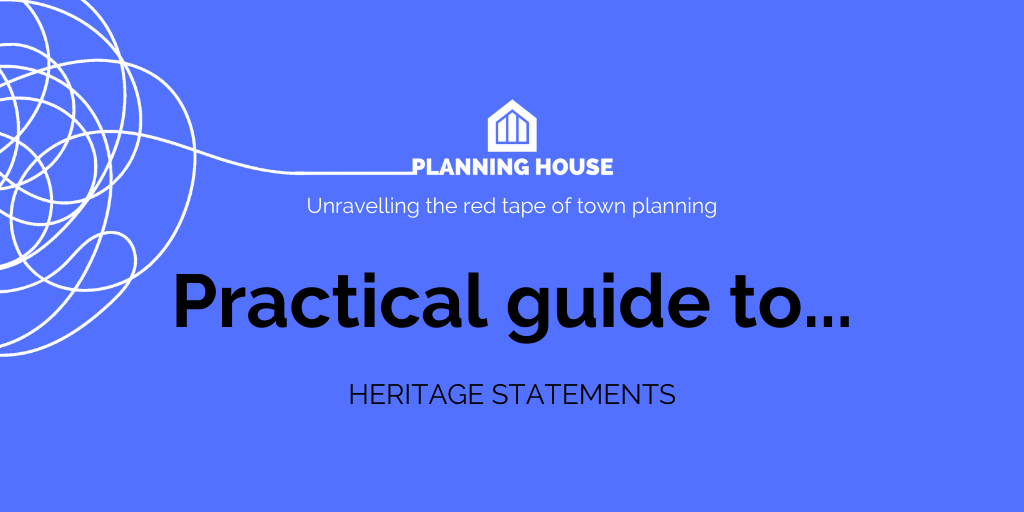
A heritage statement is an assessment of the significance of various types of heritage asset, exploring the impact of proposed developments upon these historical features.
For smaller works or those that will have a minimal impact on a heritage asset, it may be possible to produce a heritage statement without extra assistance. We’ve produced a basic TEMPLATE which you can use.
Where a heritage asset is of more significance, however, it’s wise to seek the advice of a professional who can accurately assess the asset, alongside the potential impact of any developments.
Heritage assets can be a building, monument, site, place, area or landscape identified as having a degree of significance meriting consideration in planning decisions, because of its heritage interest. It includes designated heritage assets and assets identified by the local planning authority (including for instance a local listing).
Designated heritage assets are are World Heritage Site, Scheduled Monument, Listed Building, Protected Wreck Site, Registered Park and Garden, Registered Battlefield and Conservation Areas.
A heritage statement is required to support a proposed development which has the potential to affect a Heritage Asset.
The main cases in which a heritage statement is required are:
Essentially, whenever a heritage asset or the setting in which an asset is situated will be affected by a proposed development, a heritage statement will be required.
This statement should prove that the impact of the development has been considered, evaluating whether the proposed development will have a positive or negative (or no) impact on the asset’s significance.
A list of heritage assets within the UK can be found on the Historic England website.
It’s important to bear in mind that to carry out work in one of the areas highlighted above, the services of an experienced historic environment professional are often required.
A heritage statement should include:
The level of detail required for a heritage statement will differ depending on the overall significance of the heritage asset affected by proposed developments.
Only as much detail as is required to understand the potential impacts of the development, along with the mitigation measures to be taken is necessary.
In assessing a proposed development your local planning authority will need to assess the impact of the development on any heritage assets. A heritage statement assists this process and is a national requirement.
There are templates available for Heritage Statements online, and we have produced a TEMPLATE which can be used but however it’s pretty basic and not suitable for all developments which may have an effect on a heritage asset.
If you’re producing your own Heritage Statement, you may also find it useful to read the guidance provided by Historic England on Significance and Understanding Setting.
Although we’ve provided this practical guide this may be something that you wish to seek assistance with. If you need any help with producing a Heritage Statement or any other document associated with a planning application then feel free to CONTACT US.
Related Content:
If you’re progressing with a planning application, take a look at our eBook on Application Process for more details on the planning process.

Tel : 07944844882 Email : info@planninghouse.co.uk Privacy Notice FAQ's
©2016 onwards Planning House Group Limited I All Rights Reserved I Registered in England & Wales Company Number 11894035
Registered Address: 24 Briardene Way, Easington Colliery, Peterlee, United Kingdom SR8 3NR